Alt må brytes mellom og mot noe. På denne måten kan nye kvaliteter oppstå, nye rom dannes. Espen Dietrichson (f. 1976) har bakgrunn fra Oslo Tegne- og Maleskole og Statens Kunstakademi, og har en rekke separat- og gruppeutstillinger bak seg. I tillegg til større utsmykningsoppdrag som det prisbelønte arbeidet med Nye Våler Kirke i Solør.
På Galleri Haaken vises nye verk av Dietrichson – malerier og skulpturer som markerer både en videreføring av, men også nybrottsarbeid i, et av Norges særegne kunstnerskap.
Dietrichson forsker i form, men også i formens forhold til rom; Verden der ute og erfaringen av konkrete, selvtilstrekkelige objekter. Tingenes tilstedeværelse, men også tingenes erfaringsspråk er et av kunstnerskapets omdreiningspunkter. Dietrichsons verker er konseptuelt konsentrerte og aktivt reflekterende over sin egen gjenstandskvalitet, men disse forenes ikke gjennom tematiske eller konseptuelle overbygninger; arbeidene i Sound drifts in the haze utforsker mulighetene i møtet mellom former. Det flytende feltet mellom abstraksjon og spesifisitet i det skulpturale arbeidet.
I den aktuelle utstillingen fortsetter Dietrichson sine tidligere utforskninger av objektet skulpturale kvaliteter – måten ting oppholder seg i og opptar plass i rommet; overflaten som et materielt fenomen med uendelige muligheter. Teknologiens brytning mot tradisjonen, men også deres gjensidig definerende og fruktbare kontaktflater gir fasong til de formale undersøkelsene.
Dietrichsons objekter, til tross for å være i samtale med kunsthistoriske rammeverk, tegner seg ikke inn i isme-tenkningens rigide matriser. Fortellingen er ikke og har aldri vært bærende for Dietrichsons verker. Gjenstandene forteller allikevel noe om verden ved å være i den; som gjenstander formulerer de en form. Å være gitt en form er nettopp å ha en fortelling, men en utenfor språket, en som ikke er tegnmessig tekstlig, men gjenstandsspesifikk. Dietrichsons arbeider forteller ikke gjennom ordets forhold til andre ord, men gjennom formens forhold til andre former. Forholdskraften mellom verk og verk; brytningsgraden mellom verk og rom; i disse spenningene speiles meningsgrunnlaget for verkene.
Til tross for et formspråk som er forankret i modernismen kunsttenkning, er ikke kunsthistorien til stede hos Dietrichson som tradisjons- eller idéprogram så mye som markører og muligheter; det utømmelige i det mulighetsrommet teknologien skaper. Brytningen mellom teknologi og den håndfaste kvaliteten. Algoritmene og den digitale teknologien Dietrichson benytter for å arbeide frem formale løsninger i skulpturen er ikke så mye et brudd med tradisjonen som måter å utvikle og fornye den på.
Skulpturene som presenteres i Sound drift in haze kjemper nærmest imot lettheten i utstillingens tittel. Dietrichson presenterer bronseverk som rives mellom introverte gester og en unngåelig tilstedeværelse i verden, som var de innbegrepet av form overhodet – barokke mot sin vilje. Skulpturspråket presentert på Galleri Haaken utvider Dietrichsons arbeid i nye retninger. Poesiens affinitet med abstraksjon pares med det håndgripelige objektets konkrete nærvær.
Skulpturens assosiasjon med hånden, så å si selve innbegrepet av håndverket, vokser her ut av 3D-printerens eteriske, nesten vektløse verktøykasse. En letthet som bronsens soliditet og tyngde veies mot. Her finnes koblinger til Arnold Haukelaund, Gunnar S. Gundersen, men også Naum Gabo og Constantin Brâncuși.
Maleriene utforsker denne samme grunnproblematikken; i Dietrichsons geometrisk-abstrakte tablåer er det arkeologiske dypstudiet i verkets skulpturale muligheter grunnleggende. Arbeidene i Sound drifts in the haze responderer på hverandre i dialektisk formal utveksling. Resultatet er en meditasjon over det multimediale.
Dietrichsons bilder og skulpturer på Galleri Haaken tenker med og som form. Men ikke med fortellingen som forklaringsmodell. Sound drifts in haze er ikke en utforskning av det inspirerte øyeblikket – åpenbaringsestetikkens overskridende manifestasjoner. Snarere er det friheten til å være form, eller: Formens frihet til å være, som er sentralt i denne utstillingen.
Everything must be defined and tried against something else; objects suspended; forms contested. Only by the same token can new qualities and spaces emerge. Espen Dietrichson (b. 1976) graduated from the Oslo School of Drawing and Painting and the Norwegian National Academy of Fine Arts. He has done several group and independent exhibitions, in addition to larger decorative commissions, such as the award-winning work on Nye Våler Church in Solør.
Gallery Haaken shows new works by Dietrichson – paintings and sculptures which both represent a continuation and an expansion of a formal repertoire unique on the Norwegian scene of contemporary art.
Dietrichson approaches the artwork as formalist and material science – he conducts research into the logic of form and formal relationships. But also, how object and space interrelate; the world out there, and an experience of concrete, specific, self-sufficient objects. The presence of things, as well as the language of material experience, make up fundamental optics in his artistic practice. His work abounds in conceptual concentration, actively questioning its own objecthood and physical capabilities. Yet, it is not defined or delineated by thematic or conceptual superstructures and frameworks; Dietrichson’s new work at Gallery Haaken explores and negotiates the possibilities of formal encounters – the drifting haze between abstraction and specificity in the grammar of sculpture.
In Sound drifts in the haze, Dietrichson continues his earlier preoccupation with the sculptural properties of the object – the way entities claim and operate in space; surface, texture and form as a material phenomenon of endless possibilities. The conflation of technology and tradition, but also their fertile interlacing and mutually defining encounters, give shape to his formal investigations.
Dietrichson’s objects, despite being in conversation with art historical contexts and conditions, do not subscribe to the rigid matrices of isms and theories. Narrative is not and has never been constitutive for his work. However, an object still articulates something in and about the world by its quality of fixation and presence. By simply being here. And it is precisely as an object that it denotes form. To be given a form, a shape, is to have a narrative, but one eclipsing linguistic, predicative patterns. Rather than representing a system of meaning reduced to the condition of language, Dietrichson’s sculptural work possess what art historian Gottfried Boehm called Bildlichkeit, or “imageness”; its narratives are object specific. It does not convey content through a word’s semantic relationship with other words, but through a form’s relationship to other forms. The power of relationships between work and work, thing and thing; the angle of refraction between object and space; within these tensions, meaning is mirrored, suggested, negotiated.
Despite utilizing a sculptural syntax very much rooted in the aesthetics of modernism, the history of art is not so much present in Dietrichson as intellectual and traditional trajectories as marks of opportunity: the inexhaustible pathways produced by technology – but also where technology and the handmade mark intermingle. The algorithms and the digital mechanics deployed by Dietrichson in order to unearth new sculptural solutions are less a break with tradition than it represents a way to expand and rejuvenate it.
The sculptures presented in Sound drifts in the haze almost wrestle against the feathery lightness of the exhibition’s title. Dietrichson displays bronze pieces suspended by their introvert gestures and an unavoidable presence in the world, as if a primal definition of form as such: Heidegger’s “geworfenheit” – things thrown out into the world, the emblem of hereness. Their richness of texture and shape skirmish with doubt and uncertainty, almost baroque against their will. The language of sculpture presented at Gallery Haaken pulls Dietrichson’s work in new directions, into new orchestrations of space. Poetry’s affinity with abstraction is coupled with the individual presence of the tangible object.
Sculpture’s intimate rapport with the hand, arguable a principal imagery of craft, grows, in Dietrichson’s pieces, out of the ethereal toolbox of the 3D printer. A lightness against which the solidity and substance of bronze is balanced. Here you will find associations to Norwegian sculptor Arnold Haukeland, but also Naum Gabo and Constantin Brancusi.
The paintings, too, explore the same fundamentals of form; in Dietrichson’s geometrical abstraction, we find an almost archaeological intensity of sculptural scrutiny. The works presented in Sound drifts in the haze respond and react to each other in a procedure which is inherently dialectical and dynamic. Wave gives way to wave; pull and tug; protrusion and retreat. The result is a meditation on the conditions of the intermedial itself.
Dietrichson’s paintings and sculptures at Gallery Haaken think with and as form. But not with narrative as its chief impetus or mode of conveyance. Rather, it is the freedom to be form, or to the form’s freedom to be, which anchor this exhibition.
Tjuvholmen allé 23
N-0252 Oslo
Tuesday - Friday 12 - 17
Saturday 12 - 16

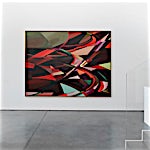

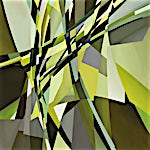

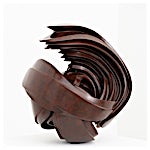
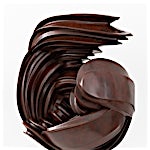

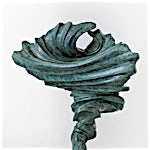


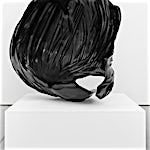
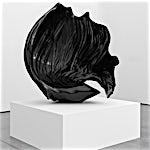
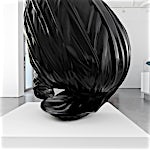
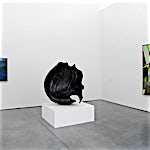

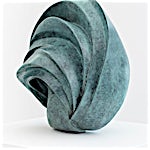
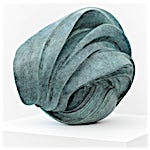
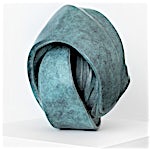
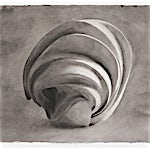
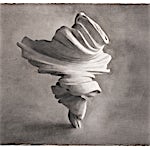
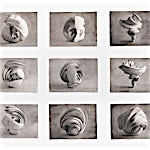
info@gallerihaaken.com
Facebook
Instagram